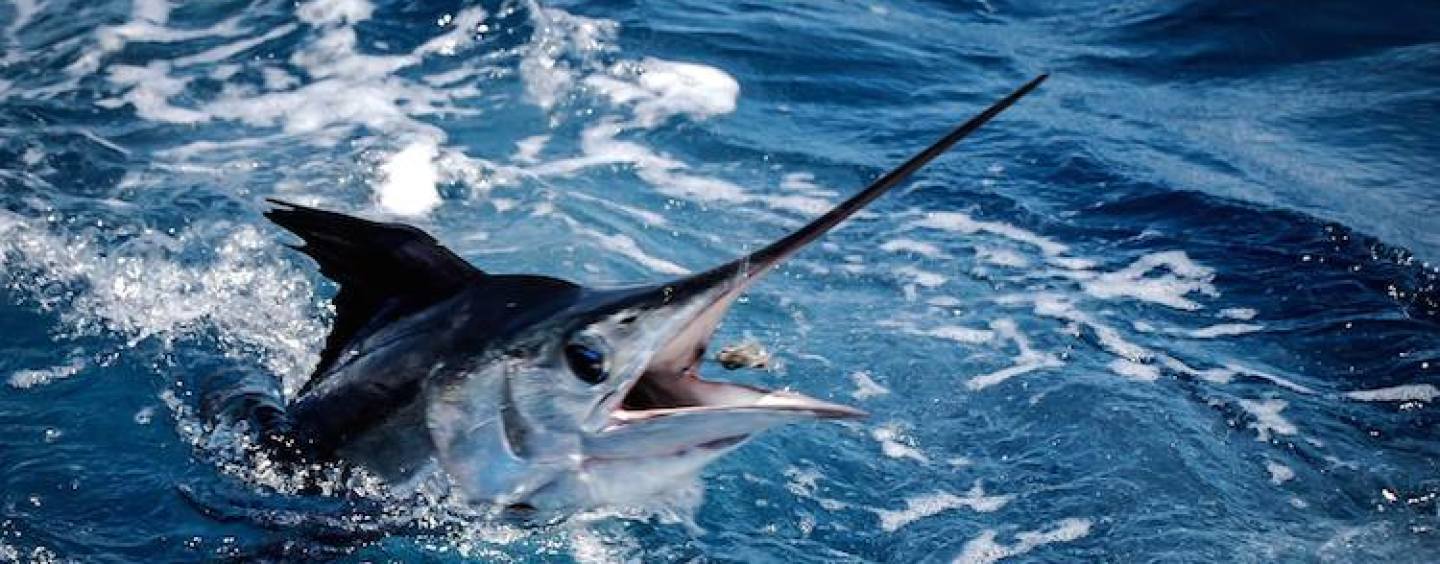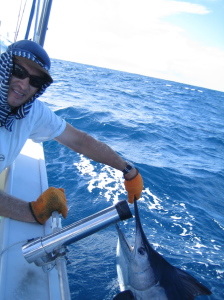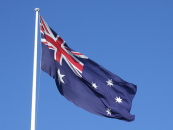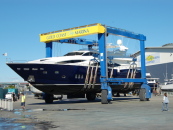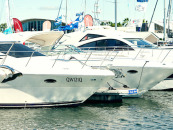Listed in a marlin fishing blog as one of the top 10 destinations for marlin fishing in Australia, the Gold Coast is one that will not disappoint. Simon Christidis shares his insights about marlin fishing and the community of game fishers who thrive around it.
The black and the blue
The largest black marlin in the world migrate to North Queensland from September. The juvenile marlin travel down the coast in the currents feeding off bait fish and usually arrive on the Gold Coast around early December. Depending on bait and their numbers, they will be around until April. Juvenile black marlin are found where there is bait; so, finding the bait is the key to catching the large fish. The bait fish can be anywhere from off the beach to miles offshore.
The blue marlin, which are generally the larger than the black marlin, can be caught all year round off the Gold Coast, and are more prolific from March through to July, most likely due to the departure of the black marlin. Blue marlin tend to like blue water and are more loners in their movement. They can be caught as close as 100 to 1,500 metres offshore.
Locations
There are areas off the Gold Coast that tend to hold the bait—usually there is structure at the bottom and the currents form an eddy to hold the bait fish. During the 2014 season, an area called Deep Tragg held a lot of bait and lots of marlin were caught in this area.
Strategy and technique
As with many species, when catching marlin the strategy is to find the bait fish and you will find the marlin. However, for most fishers the most important consideration is to firstly find the time. As the famous saying goes, patience, persistence and perspiration make an unbeatable combination for success.
There are a number of techniques to catching marlin with trolling lures—the most common and successful strategy. In rough seas, being on the move reduces the chances of seasickness. With a spread of lures, up to five rods, allows you to cover vast ground in search of the fish. Your crew on the deck should be assigned specific duties to help clear the rods away when you have a fish on a line.
Marlin are like dogs chasing a car. They are attracted to the sound of the wash and the movement of the boat. The marlin will swim around the lures and once they see something that resembles food, they will take the bait and you are hooked up.
Live baiting is another technique for catching marlin. There are various methods of attaching live bait that you should investigate before you set off. The best bait are slimy mackerel which seem to be the most productive.
Tides play a big roll in catching marlin. There is a bite-time, and this is generally two hours prior and two hours after high tide. Safety is the most important factor while out at sea in handling a very powerful and sometimes unpredictable fish with a spear for a nose.
A community of marlin fishers
The best way to learn to catch marlin is to join a game fishing club. There are two clubs on the Gold Coast. Gold Coast Game Fishing Club meet at their Runaway Bay headquarters on the first Wednesday of each month. Another is Surfers Paradise Sports and Game Fishing Club that meet at the Southport Yacht Club first Monday of each month. All guests are welcome to both clubs. At these clubs you will meet like-minded fishers. You will find out how to set up your boat and receive advice on rods and tackle. Members are an excellent source of information on where and what is biting. The clubs’ network provide an opportunity for you to fish on other members’ boats and learn from other crew on board.
These clubs are governed by the Game Fishing Association of Australia (GFAA), which is the longest established national fishing association in the world. It has been, and remains, a model and example for game fishing associations around the world. As such, the GFAA is affiliated with the International Game Fish Association (lGFA) and plays an active part in the leadership of the sport of game fishing on a world level. The GFAA code of practice is extensive, covering fishing ethics, conservation, education, safety and competition rules.
There are many sanctioned tournaments run along the Australian coastline which are all good fun and a great way to meet fishing comrades. Check the website for details www.gfaa.asn.au.
By Andy Kancachian






















